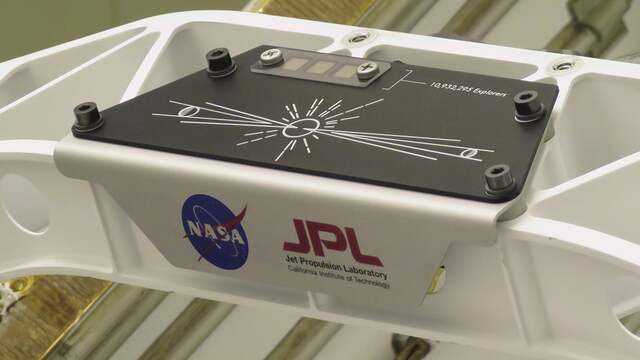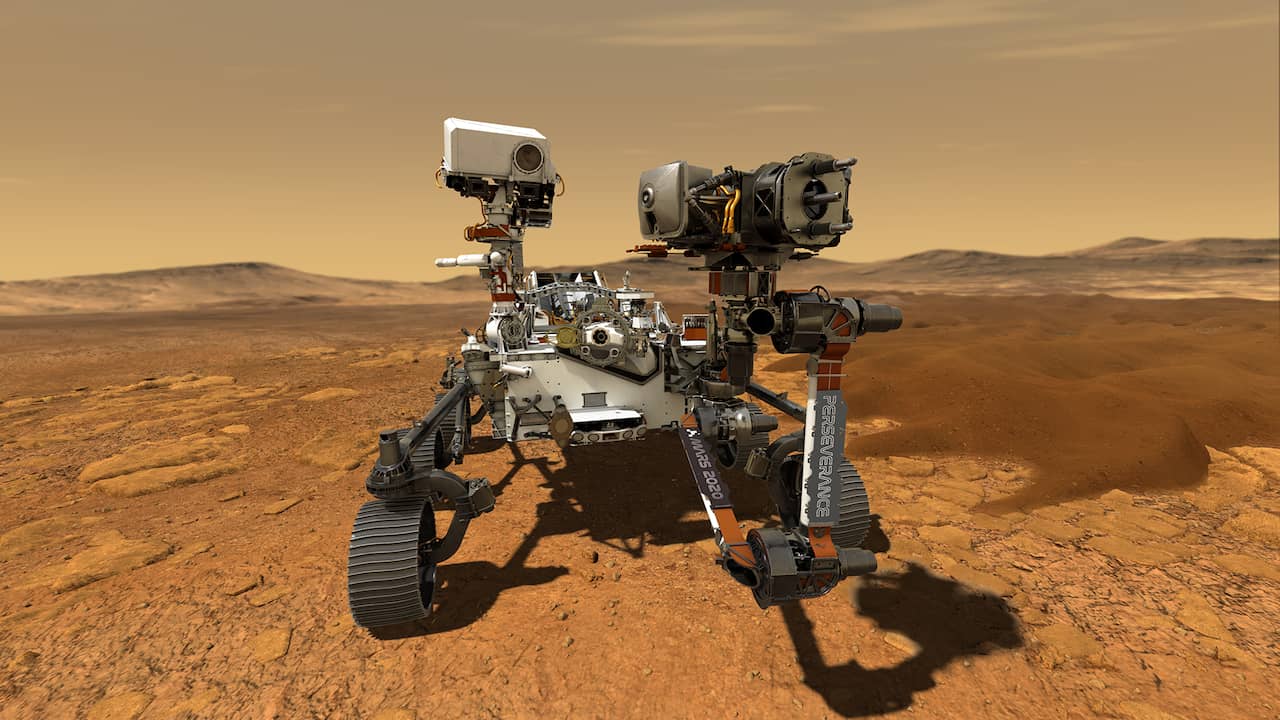The American space agency NASA successfully landed the rover Perseverance on the surface of Mars on Thursday evening. At 9:56 PM, Mission Control received the redeeming signal that the rover had landed safely. Perseverance is NASA’s ninth object and fifth rover on Mars.
The successful landing means that the rover survived the “seven minutes of terror,” or the roughly seven-minute landing procedure.
During this procedure, the probe with the rover in it rushed through the atmosphere. If it had entered too steeply, the probe could have burned out. If it entered too horizontally, it could shoot past Mars.
After entering the atmosphere, the probe slowed down by means of a parachute. After this a kind of flying crane with Perseverance on it came out of the probe.
The crane was looking for a good landing spot to hoist the vehicle from about 20 meters to the ground from there. Once the vehicle was parked, the cables clapped and the crane crashed ahead.
The US is the third country to reach Mars in a week and a half. The United Arab Emirates became the first Arab country to bring a satellite to Mars a week earlier, and China also put a vehicle into orbit around the planet. China wants to put a rover on Mars in May and thus become the third country with a vehicle on the planet.
This is what Perseverance’s landing looked like. (Video: NASA)
Rover searches for traces of life in a dehydrated lake
Perseverance has landed in the Jezero crater, which was a large lake 3.5 billion years ago. NASA hopes to find traces of (microscopic) life here.
The vehicle will also package soil samples. A future mission involving NASA in collaboration with its European counterpart ESA is to collect these packages and bring them back to Earth.

–
–
–
An artist’s impression of the Jezero crater billions of years ago, when there was still water in it. (Photo: NASA / JPL-Caltech)
Mission includes 10.9 million names and tribute to healthcare workers
The mission has not only scientific goals, but also symbolic ones. For example, three chips have been attached on board, with the names of 10.9 million people worldwide who have registered for this.
There is also a placard on board that pays tribute to the health care workers who devoted themselves to Earth during the COVID-19 pandemic.

–
–
–
The placard with three chips in the top left, on which almost eleven million names have been placed. (Photo: NASA / JPL-Caltech)
Experimental helicopter hitches a ride with Perseverance
Perseverance has also taken the small helicopter Ingenuity with them. NASA wants to use this to test whether a helicopter can be of value in exploring a planet with a thinner atmosphere.
The helicopter weighs less than 2 kilos and its hull is about the size of a kettle. Perseverance first looks for a place from which Ingenuity can take off for the first time.
– .

